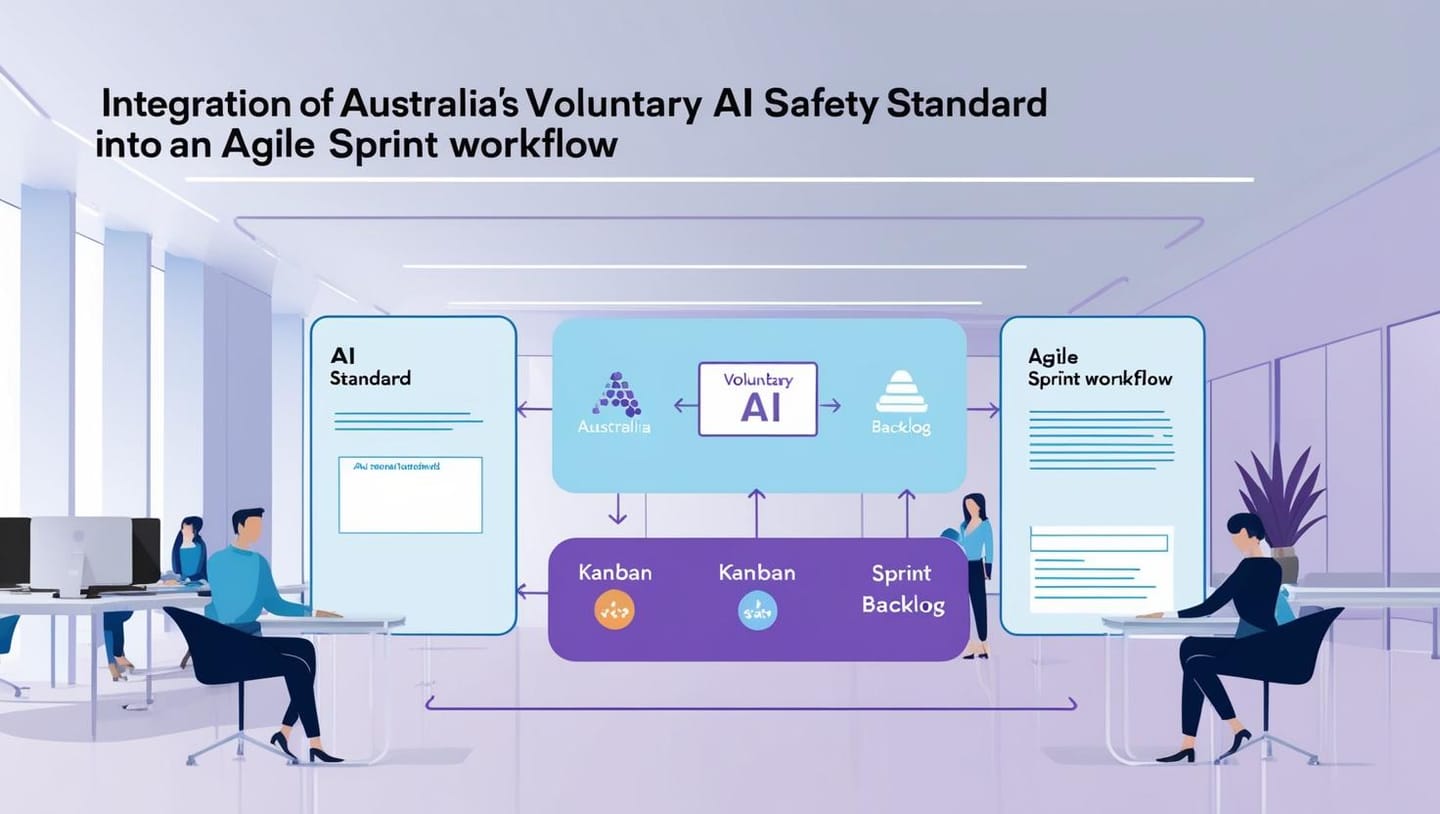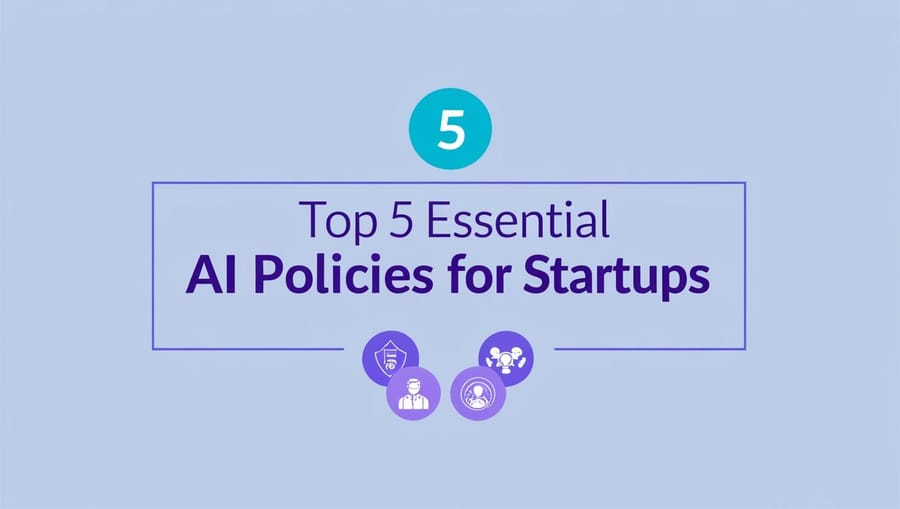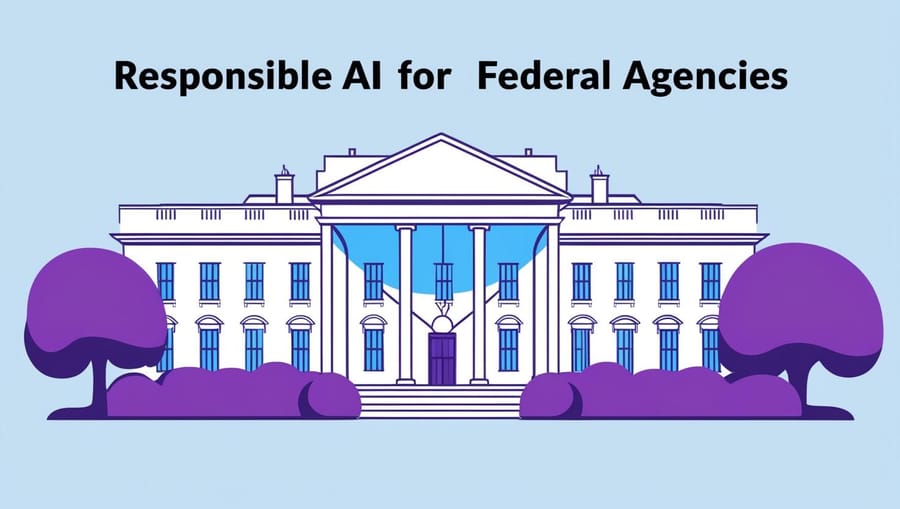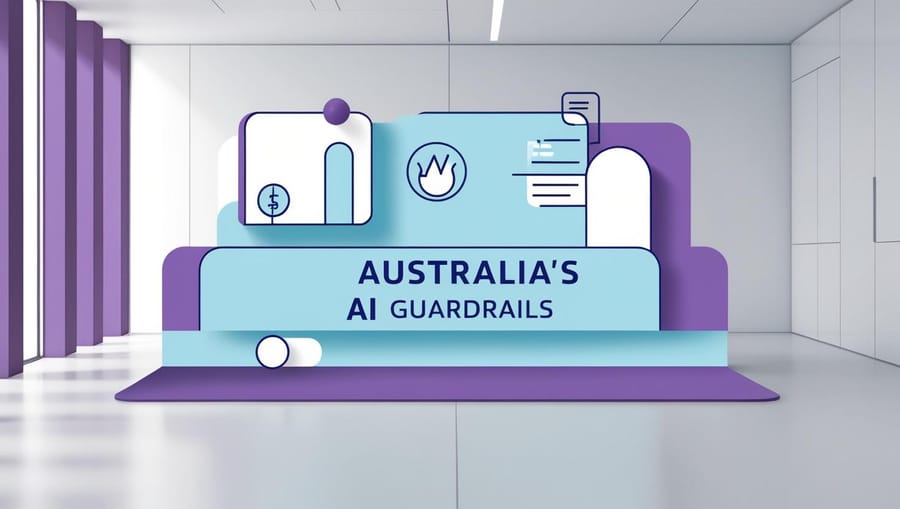Australia's AI landscape is rapidly transforming industries—but is your team prepared for the risks associated with powerful AI systems? Frameworks like Australia’s Voluntary AI Safety Standard, alongside international benchmarks such as NIST and the EU AI Act, underline the importance of embedding safety directly into your Agile workflow. Doing so not only ensures compliance but also builds customer trust and positions your organization strategically in the market.
In this guide, we’ll explore practical, actionable strategies to seamlessly integrate the Voluntary AI Safety Standard into your Agile sprints, turning compliance from an obligation into a competitive advantage.
Sprint 0: Transforming AI Safety Standards into Actionable User Stories
At the very start, align your compliance objectives with your product roadmap by clearly defining user stories:
- Real-world scenario: For a healthcare AI project, your user story might be, “As a compliance officer, I need automated logs tracking all interactions with patient data to ensure ongoing privacy compliance and audit readiness.”
- Tip: Engage cross-functional stakeholders—including product managers, engineers, legal, and risk experts—to create a comprehensive set of compliance-focused user stories that reflect diverse perspectives.
Backlog Refinement: Making AI Safety Visible and Tangible
Ensure safety remains at the forefront of your backlog management:
- Explicitly label AI safety tasks to keep them visible and prioritized.
- Example: A fintech application includes a task “Run bias and fairness assessments” prominently alongside feature-driven tasks.
- Tip: Consistently allocate at least 15% of each sprint’s capacity specifically to safety-related tasks to avoid compliance becoming an afterthought.
Sprint Planning: Integrating Compliance into Core Workflow
Embed safety directly into your sprint planning:
- Establish detailed acceptance criteria explicitly tied to safety, such as, "Models must pass predefined bias and robustness thresholds before deployment."
- Break down larger safety tasks into clear, achievable sprint-sized tasks.
- Example: A cybersecurity tool schedules specific tasks such as “Establish baseline metrics for adversarial robustness tests.”
Daily Stand-Up: Regular Safety Check-Ins
Include safety proactively in daily team discussions:
- Incorporate a daily prompt: "Any new safety risks identified today?"
- Tip: Create a dedicated digital communication channel (Slack, Teams) specifically for quickly flagging emerging risks, maintaining transparency and rapid response.
Development: Embedding Governance into Code
Automate compliance as part of your development practices:
- Set up pre-commit hooks enforcing essential documentation standards.
- Automate bias, fairness, and security testing through your CI/CD pipeline.
- Example: HR tech platforms routinely incorporate automated fairness checks before any major update.
Mid-Sprint Hazard Assessment: Proactive Collaboration
Regularly check for new hazards through collaborative sessions:
- Conduct focused mid-sprint hazard workshops to promptly identify emerging issues.
- Scenario: Chatbot providers frequently host brief workshops to uncover potential offensive or inappropriate outputs.
- Tip: Clearly assign follow-up actions and owners immediately following these assessments.
Testing & Validation: Combining Automation with Human Insight
Balance automated testing with human oversight:
- Integrate fairness regression tests following model updates.
- Schedule manual "red-team" exercises where individuals from different departments simulate real-world misuse scenarios.
- Example: Financial institutions regularly conduct exercises simulating fraudulent transactions to rigorously test AI detection capabilities.
Sprint Review: Showcasing Compliance Clearly
Clearly communicate safety measures during sprint reviews:
- Demonstrate resolved risks using visual dashboards.
- Example: Healthcare AI projects showcasing tangible improvements, such as reduced data leakage incidents.
- Tip: Utilize clear, straightforward visuals like graphs and charts to effectively communicate safety status to stakeholders.
Retrospective: Continuous Safety Improvement
Regularly reflect on your compliance practices:
- Ask your team, "What safety practices worked effectively, and what areas can we improve?"
- Real-world case: Insurance companies have significantly boosted efficiency in hazard logging processes by integrating retrospective feedback.
- Tip: Keep all improvements actionable and clearly measurable.
Scaling Safety: Enhancing Capabilities through Education and Tools
Expand your AI safety strategies as your team scales:
- Automate recurring safety reports (weekly or monthly risk summaries).
- Embed AI safety training into onboarding and ongoing professional development.
- Example: Cybersecurity organizations typically integrate comprehensive AI safety education modules into their onboarding programs for new hires.
Leveraging Cognitiveview in Your Agile Workflow
Effectively embedding Cognitiveview within Agile sprints significantly enhances proactive AI safety management, aligning seamlessly with Australia's Voluntary AI Safety Standard and global compliance frameworks.
Risk Management Streamlined
Cognitiveview simplifies the identification, assessment, and management of AI-specific risks by converting complex compliance requirements into clear, actionable tasks. Early in sprint planning, Cognitiveview helps teams prioritize risk management tasks clearly within the backlog, ensuring compliance is addressed upfront rather than as an afterthought.
Holistic Controls and Compliance Automation
By automating controls and compliance tracking, Cognitiveview ensures teams can confidently demonstrate adherence to AI safety standards throughout the sprint cycle. Teams gain immediate visibility into their compliance status, enabling proactive remediation and preventing compliance gaps from impacting production timelines.
Seamless Integration with Observability and MLOps Platforms
Cognitiveview integrates directly with existing observability tools such as Datadog, Prometheus, and Grafana, as well as MLOps platforms like MLflow and Amazon SageMaker. This integration enables teams to maintain their established monitoring practices while enriching these tools with essential compliance metrics, risk alerts, and governance insights.
Enhanced Transparency in Sprint Reviews
During sprint reviews, Cognitiveview's intuitive dashboards deliver clear, actionable insights into compliance and risk posture. Stakeholders can quickly grasp the effectiveness of implemented controls, facilitating straightforward discussions around safety measures and fostering trust.
Data-Driven Retrospectives and Continuous Improvement
Cognitiveview provides data-driven retrospectives, clearly identifying what compliance practices were effective and highlighting opportunities for improvement. Teams can leverage this data to refine their processes continuously, driving enhanced compliance efficiency over time.
Real-world Scenario
A law firm integrated Cognitiveview into their Agile workflows, significantly reducing the time spent preparing compliance documentation. By automating risk tracking and controls monitoring, the team could reallocate resources towards innovation, confident in their regulatory readiness.
Conclusion & Call to Action
Integrating Australia's Voluntary AI Safety Standard into your Agile workflow not only protects your organization—it actively strengthens customer trust, enhances your market reputation, and ensures readiness for future regulatory demands.
Ready to advance your AI safety strategy? Choose a few actionable insights from this guide and implement them in your next sprint. We'd love to hear your experiences—share your insights and questions below, and together, let's drive the future of responsible AI.






